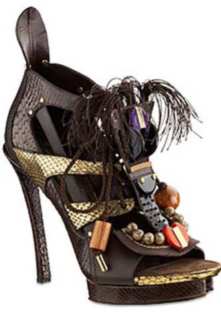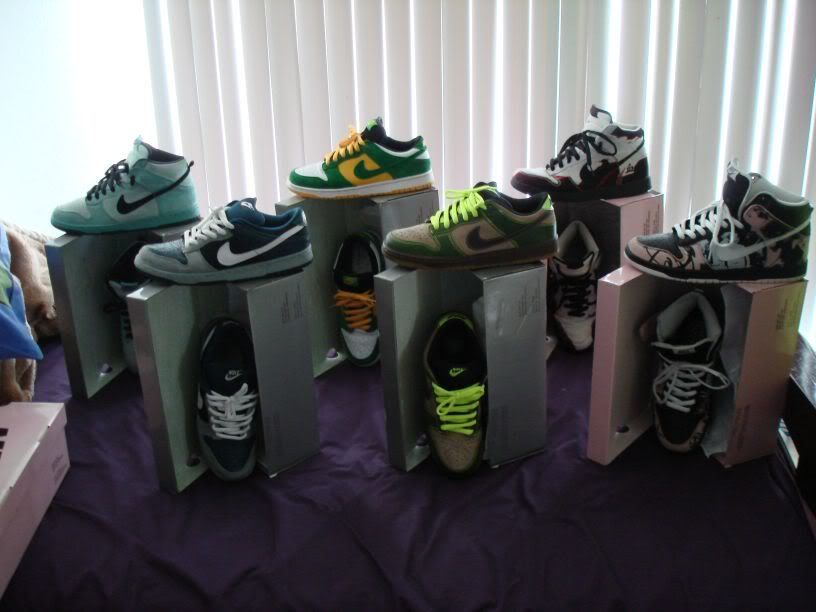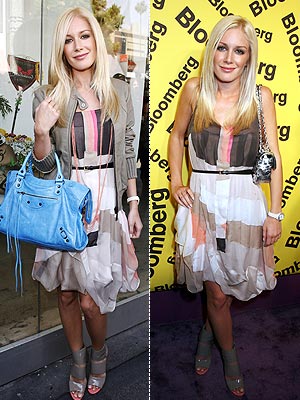Since I have first heard of the Compact Challenge, I have found it very hard to not want to buy things that I see in stores. I have, however, realized how many different things I buy that I don’t actually need. Whether it’s shoes, clothes, or whatever, I realize that I have become addicted to shopping. However, when I heard about the Compact Challenge, I realized that what it was saying was actually a great idea. I mean, when I look at all of my things, how much of it is things that I need, and how much of it is just things that I WANTED.
Since I was a young child, I have always heard the term, “Reduce, Reuse, Recycle.”

Because I learned this in elementary school I never thought about it that much. However, as the economy moves on, I feel that everywhere I turn, I hear the phrase whether it’s from a person, or something I see. Although I haven’t thought about it much in the past, I now realize that it’s something that I really need to start considering. Not that I don’t recycle because I do. However, I feel that at the same time, there is a lot more I could do to “be green.”

This past weekend, I was at the mall and of course there were many things tempting me to buy them. I feel especially this way if I’m going to stores that I can usually find many things that I want to buy. (ex: H&M/Forever 21/etc.)

So did I buy them or not? YES, I did buy them. Honestly, at that point in time, I didn’t even remember about the Compact Challenge and that I was supposed to be saving money and buying things from thrift stores, etc.
Sometimes when I buy things, I justify it as okay because it was an in-expensive buy. For example, at Forever 21, their clothes tend to be decent and inexpensive. However, one thing I did not realize, is the work that went in to opening this store that thousands of people shop at. In the news article, "Forever in Trouble?" by Chuck Byun, he discusses the making of Forever 21. Forever 21 was basically opened by a hard working Korean immigrant who was searching for the American dream. After going through the hardships of working hard and staying late, he and his wife were able to eventually open Forever 21. This store is currently one of the most popular stores among teenage girls. When I read this article, I found it interesting because I never thought about how the store opened. All I really thought about was the clothes I liked/wanted from the store. I think this is how a lot of people are. As a society, we tend to just look at the things we like wihtout realizing all the hard work that went into the making of it. We tend to not really care about where it comes from as long as we like the fashion of the clothes. This seems to come from the idea that fashion is the only thing that matters.
I’ve realized that the world has given most people the mindset that when they see something they want, they just HAVE to get it. In Yuniya Kawamura's book, "Fashion-ology," she states, "The fashion system is about fashion production...influential leaders of fashion, and institutions that help create and spread fashion are participants in the system." (page 88) She's completely right!!! We tend to see a lot of influential figures in the media who have trendy clothes and it makes us want to buy, buy, and keep buying so that we can constantly keep up with the latest fashion. We see celebrities who have beautiful clothes and we just want what they have and therefore and sucked into buying new things that will bring us closer to what celebrities have. And sadly, I have fallen into that trap. Whether I see a celebrity wear a certain style or something else, it makes me want to go out and buy more clothes/shoes/etc. I hope that starting now, and continuing through the next weeks, I will be able to resist from all the temptations that shopping brings and instead, either not go shopping, or just learn to control myself when I see things that I want. I think that if I can learn to control myself, the Compact Challenge will come to me a lot easier than if I just ignore it.
Steph Hirsh
image 1: http://www.sustainablestyle.org/files/blog-10-things-not-new.jpg
image 2: http://img.timeinc.net/fortune/services/sections/customprojects/sections/061002_GreenBusiness_cvr.jpg
image 3: http://astridsmamma.blogsome.com/images/H&M.jpg
Byun, Chuck. "Forever in Trouble?" KoreAm Journal. April 4, 2003. Class Reader.
Kawamura, Yuniya. "Fashion-ology: An Introduction to Fashion Studies." 2005, 2006. Page 88.
 My first instinct upon hearing about the compact challenge was to clean out my closet and pick out the clothes that I don’t wear anymore. I picked out several items of clothing and I started designing my first top. After several failed attempts at stitching and draping, I decided to rip the whole project apart and use the material to make a bag and a belt instead. The top wasn’t something I’d honestly wear in public—the fit was not flattering--and the look that I came up with was extremely out of date.
My first instinct upon hearing about the compact challenge was to clean out my closet and pick out the clothes that I don’t wear anymore. I picked out several items of clothing and I started designing my first top. After several failed attempts at stitching and draping, I decided to rip the whole project apart and use the material to make a bag and a belt instead. The top wasn’t something I’d honestly wear in public—the fit was not flattering--and the look that I came up with was extremely out of date.





























 I know we are all pretty familiar with the infamous Anything But Clothes party, although I wasn't until I looked it up on Google. I found that it is a pretty popular college themed party and as the name suggests, you can show up dressed in anything but clothes. That dress reminded me of an ABC party. Imagine coming to school dressed in something made of things we throw away or take for granted. The whole point of an ABC party is to be creative, right? Well, I thought to myself why do it for a party when you can do it for Earth Day?
I know we are all pretty familiar with the infamous Anything But Clothes party, although I wasn't until I looked it up on Google. I found that it is a pretty popular college themed party and as the name suggests, you can show up dressed in anything but clothes. That dress reminded me of an ABC party. Imagine coming to school dressed in something made of things we throw away or take for granted. The whole point of an ABC party is to be creative, right? Well, I thought to myself why do it for a party when you can do it for Earth Day? I know everyone wants to be a trend setter like Coco Chanel, however she is quite famous for her lifestyle (Kawamura 68). She did not know much about clothing production (Kawamura 64), so she heavily relied on her seamstresses and tailors (Kawamura 68). Unlike Madeleine Vionnet and Madame Grès, Chanel's name still lives on. Although ironic (since Vionnet and Grès who were both trained), it seems that people who have ideas and connections can make clothes. Honestly, anyone would make a definitely fashion statement dressed like they got dressed in the dark. I'd definitely accept anyone who'd wear trash bags and duct tape, creative and inventive... I love it. Imagine how much money you'd save and one day... those luxury designers would follow suit.
I know everyone wants to be a trend setter like Coco Chanel, however she is quite famous for her lifestyle (Kawamura 68). She did not know much about clothing production (Kawamura 64), so she heavily relied on her seamstresses and tailors (Kawamura 68). Unlike Madeleine Vionnet and Madame Grès, Chanel's name still lives on. Although ironic (since Vionnet and Grès who were both trained), it seems that people who have ideas and connections can make clothes. Honestly, anyone would make a definitely fashion statement dressed like they got dressed in the dark. I'd definitely accept anyone who'd wear trash bags and duct tape, creative and inventive... I love it. Imagine how much money you'd save and one day... those luxury designers would follow suit.



-01_md.jpg)

.jpg)

